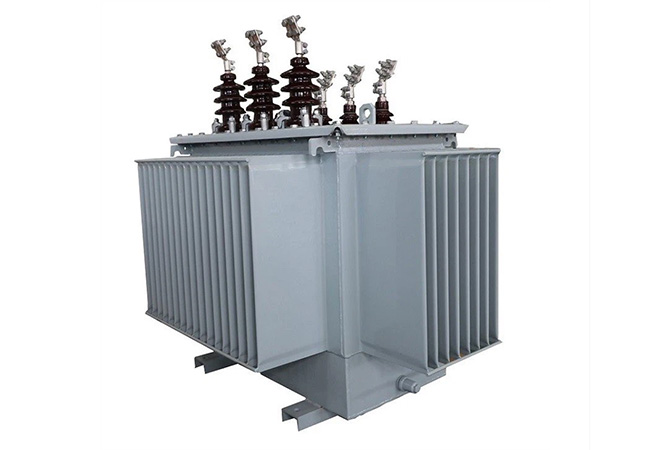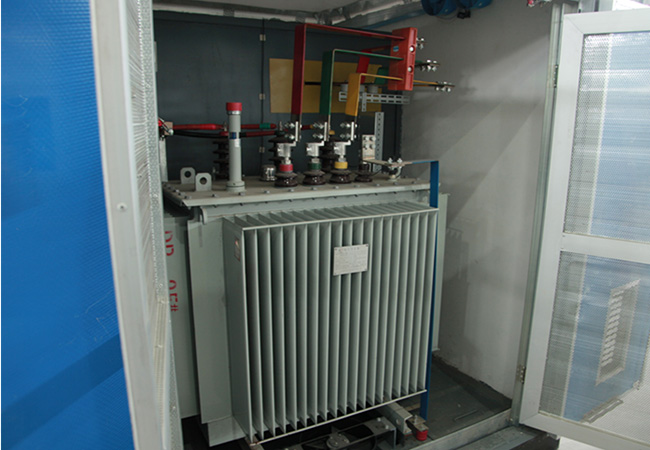What Is The Difference Between Dry-Type Transformers And Oil-Immersed Power Transformers? How To Choose Between The Two?
08-19 2024 | By:
1. About dry-type transformers
Dry-type transformers refer to transformers whose cores and windings are not immersed in insulating oil. There are two types of cooling methods for dry-type transformers: natural air cooling (AN) and forced air cooling (PF). There are two types of dry-type transformer structures: fixed insulation encapsulation (SCB type) and unencapsulated winding structure. From the relative position of high and low voltage windings, there are two types: concentric and overlapping. The concentric structure is simple and easy to manufacture. Most dry-type transformers adopt this structure. The overlapping type is mainly used in the manufacture of special transformers.
2. Specifications of dry-type transformers
Take SCB-11—1250KVA/10KV/0.4KV dry-type transformer as an example to explain the meaning of dry-type transformer models: In the above model specifications, S represents a three-phase power transformer, C represents that the transformer winding is a resin-cast solid, G represents that the outer insulation medium of the winding is air, B represents a parked winding, R represents a wound winding, 11 represents the series number, 1250KVA represents the rated capacity of the transformer, 10KV represents the rated voltage of the primary side of the transformer, and 0.4KV represents the rated voltage of the secondary side of the transformer.
3. Technical parameters of dry-type transformers
Technical parameters of dry-type transformers are:
①Frequency 50Hz
②No-load current, required to be less than 4%
③Low voltage withstand strength: 2KV/min without breakdown
④Insulation resistance low voltage side not less than 2MΩ
⑤Winding connection method: /Y/yn0, and D/yn0
⑥Coil allowable temperature rise 100K
⑦Cooling method: natural air cooling or temperature-controlled air cooling
⑧Noise coefficient less than 30dB
Loss parameters of dry-type transformers (SCB type) of various capacities are shown in Table 1.
4. Operating environment requirements of dry-type transformers
The operating environment requirements of dry-type transformers are as follows:
①Ambient temperature -10–45°
②Relative humidity of air: daily average not more than 95%, monthly average not more than 90%
③Altitude below 1600 meters (at rated capacity)
5. Advantages and disadvantages of dry-type and oil-immersed transformers
Dry-type transformers are more expensive than oil-immersed transformers in terms of cost. The capacity of oil-immersed transformers is larger than that of dry-type transformers. Dry-type transformers are required in basements, floors and crowded places. Oil-immersed transformers are used in independent substations. Box-type substations generally use dry-type transformers. When the space is large, oil-immersed transformers are used, and when the space is crowded, dry-type transformers are used. When the regional climate conditions are humid, oil-immersed transformers are used. Dry-type transformers are used in places that require “fire and explosion prevention”. The load-bearing capacity of dry-type transformers is worse than that of oil-immersed transformers. Dry-type transformers should be operated at rated capacity. Oil-immersed transformers are allowed to be overloaded for a short time.
6. Differences between SCB type dry-type transformers and SGB type transformers
In terms of winding coils: SCB type dry-type transformer low-voltage coils are wound with foil. Winding structure: single-layer copper foil winding, interlayer material contains epoxy resin with latent curing agent and lower composite foil. Winding material: oxygen-free copper with excellent conductivity is used, with a copper content of 99.99%. The low-voltage coil of SGB dry-type transformer is wire wound. Winding structure: cylindrical coil, multiple ordinary glass fiber wrapped flat copper wires.
The short-circuit resistance of SGB dry-type transformer is stronger than that of SCB dry-type transformer.
In terms of heat dissipation, SCB dry-type transformer is better than SGB dry-type transformer.
In terms of load loss, SCB dry transformer is lower than SGB dry transformer.
In terms of temperature rise, SCB heat dissipation is better than SGB dry transformer.
7. Comparison of prices of SGB, SCB and S13 power transformers
Take the rated capacity of 1250KVA power transformer as an example, find the quotations of the same type of manufacturers on the Internet for comparison.
SGB11—1250KVA/10KV/0.4KV, SCB11-1250KVA/10KV/0.4KV, S13-1250KVA/10KV/0.4KV power transformers, previously quoted by a certain factory were 93,800 yuan/unit, 95,600 yuan/unit and 59,600 yuan/unit respectively. From this, it can be seen that the price difference between SCB type and SGB type is not much, and the price of dry-type transformers is about 1.5 times that of oil-immersed transformers.
8. Loss parameters of S13 oil-immersed power transformers
The loss parameters of S13 oil-immersed power transformers are shown in Table 2.
From Tables 1 and 2, it can be seen that the no-load loss of dry-type transformers is greater than that of oil-immersed transformers. The load loss of dry-type transformers is smaller than that of oil-immersed transformers.
9. Guidelines for the selection of power transformers
When selecting transformers, you should refer to GB/T17468—2008 “Guidelines for the selection of power transformers” and GB4208—-2008 “Enclosure protection level (IP code)”, and select power transformers that are suitable for the site environment requirements.
General principles for selecting power transformers: When selecting transformer technical parameters, the overall reliability of the transformer should be the basis, and the advancement, rationality and economy of the technical parameters should be comprehensively considered. Combined with the operation mode, technical and economic indicators should be proposed. At the same time, the possible impact on the safe operation of the system, environmental protection, material saving, transportation and installation space should also be considered.
10. Example of power transformer selection
A new cold-rolled strip steel plant on an industrial platform originally designed three transformers (two 1250KVA transformers and one 400KVA transformer) using SCB dry-type transformers. The owner unit supervisor consulted the author about the price of these three transformers. Based on the site, environment and load conditions of this plant, the author recommends that the cold-rolled strip steel plant choose oil-immersed sealed S13–M type power transformers instead. The factory accepted the author’s suggestion, which not only saved a lot of precious funds, but also met the production requirements economically and with high performance. Oil-immersed power transformers have mature technology, natural air cooling, stable quality, strong short-circuit resistance, suitable for high humidity and high temperature environments, strong overload capacity, long life, and the price is about two-thirds of dry-type transformers. Therefore, unless there is a fire protection requirement to use a dry-type transformer, otherwise, oil-immersed sealed power transformers should be used.
You may also find these interesting:


